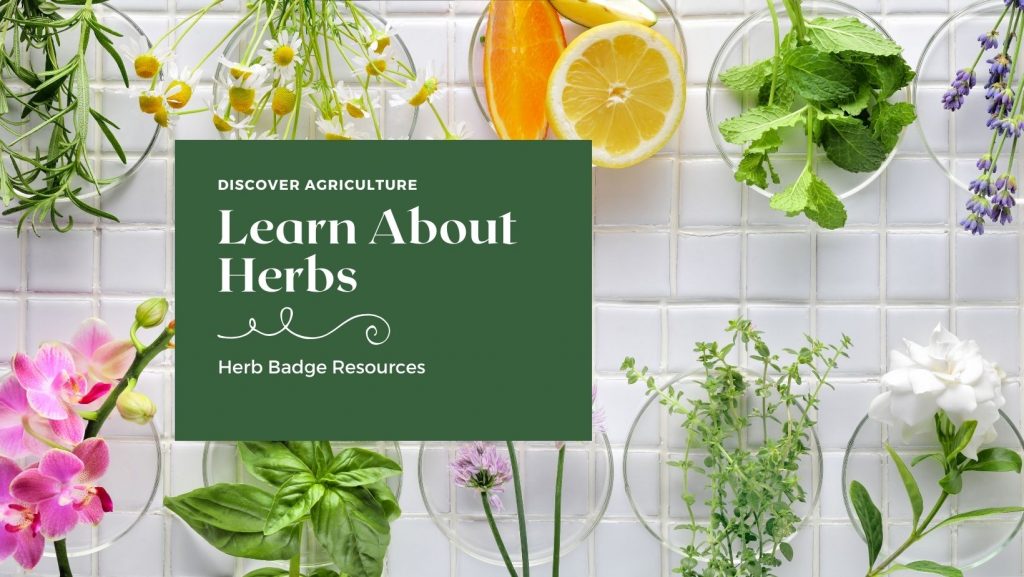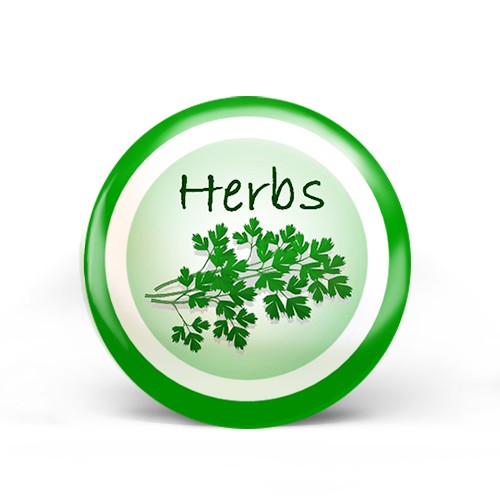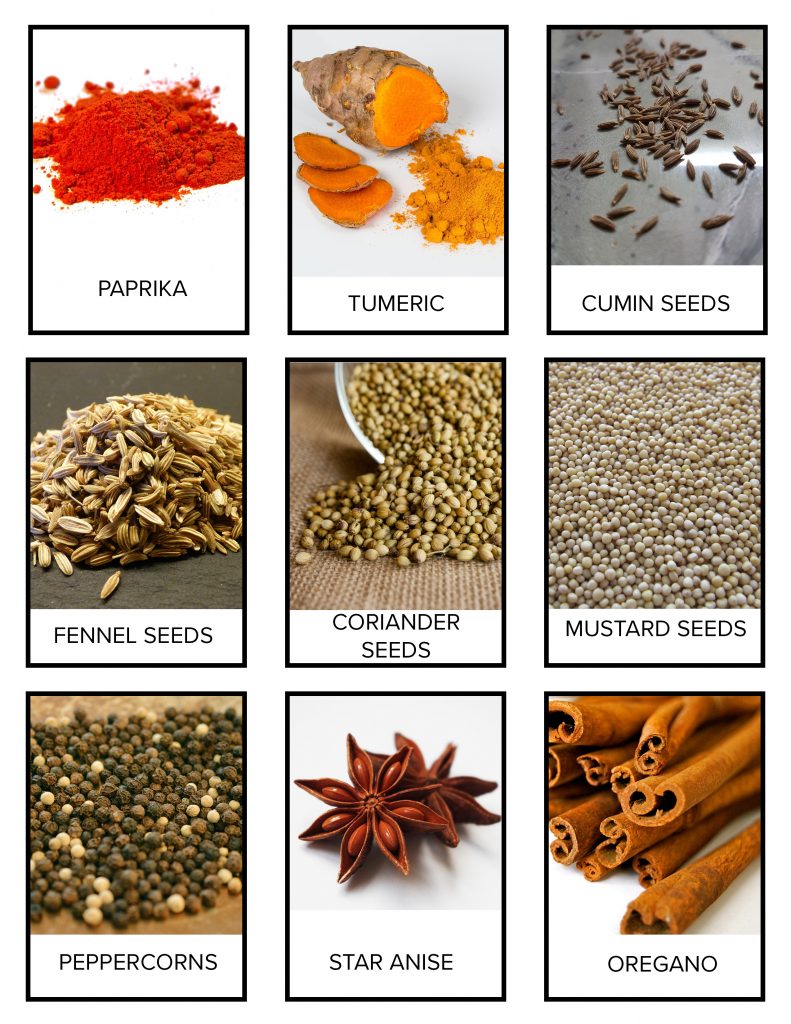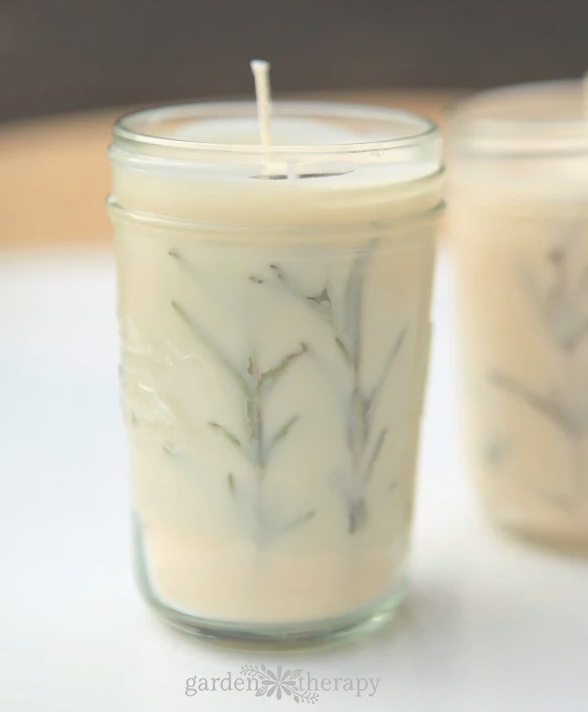What Is an Herb?
What is an herb and how does it differ from a spice? Learn about herbs and earn your Herbs badge to find out. Several of the activities below can also be used for your Herbal Teas badge.
Herbs are savory or aromatic plants that are used for teas, for flavoring and garnishing food, for medicinal purposes, or for fragrances. Herbs are the green leafy part of the plant while spices are the seeds, bark, berry, or root of the plant. Usually herbs are used fresh while spices are dried.
To Do: Print out two sets of the following herb and spice cards to learn about herbs. Divide kids into 2 relay teams. Shuffle each set of cards and place on two tables at the far end of the room along with a roll of glue dots for each table. Next to or behind each table hang a piece of poster board divided down the middle that says “HERB” on one side and “SPICE” on the other. On “go!” have the first child in each team run to the table and take a card. They must attach a glue dot and then place the card on the correct side of the poster board and then run back and tag the next child. Repeat until all cards are on the board. If any are wrong, the team must continue to send people to move one card at a time until they think they have it correct. The first team with a correctly sorted board wins.
Identifying Herbs
Being able to identify herbs by sight and smell as well as taste will help you learn to use them appropriately.
To Do: Gather a collection of commonly used herbs. First, look at each herb and find ways to identify it by sight. What do the leaves look like? What color is it? What type of stalk does it have. Next, smell the herb. Crush some of the leaves for a stronger scent. Describe what it smells like. Next, taste the herb. Is it floral? Bitter? Grassy? Is there a particular dish that comes to mind when you smell or taste specific herbs? For example Rosemary is frequently used to season lamb or red potatoes. Sage and Thyme are frequently used in stuffings.

Cooking With Herbs
Most foods would be very bland if they were not seasoned with some sort of herb or spice. One of the easiest ways to add some herbal flavors to a variety of dishes is to make herb butters.
To Do: Learn about herbs by making some herb butter. The article “How to Make Herb Butter: 8 Recipes and Suggested Uses” by Boulder Locavore not only has several herb butter recipes, but walks you through how to properly prepare and slice your herbs as well as how to properly use and store the butter once complete.
To Do: Look through your kitchen and see how many food items you can find that contain at least one herb. What do you think these items would taste like if they did not use any herbs?
Herbal Beauty Products
Herbs are healthy not only when ingested in the foods we eat, but also when applied topically for skin and hair care. Learn about herbs that are good for everything from anti-fungal treatments to reducing acne. First Cry Parenting has a great article entitled, “11 Herbs and Spices That Are Good for Your Skin”.
To Do: Make homemade bath bombs. Lovely Greens has an easy to follow recipe for oatmeal lavendar rose bath bombs.
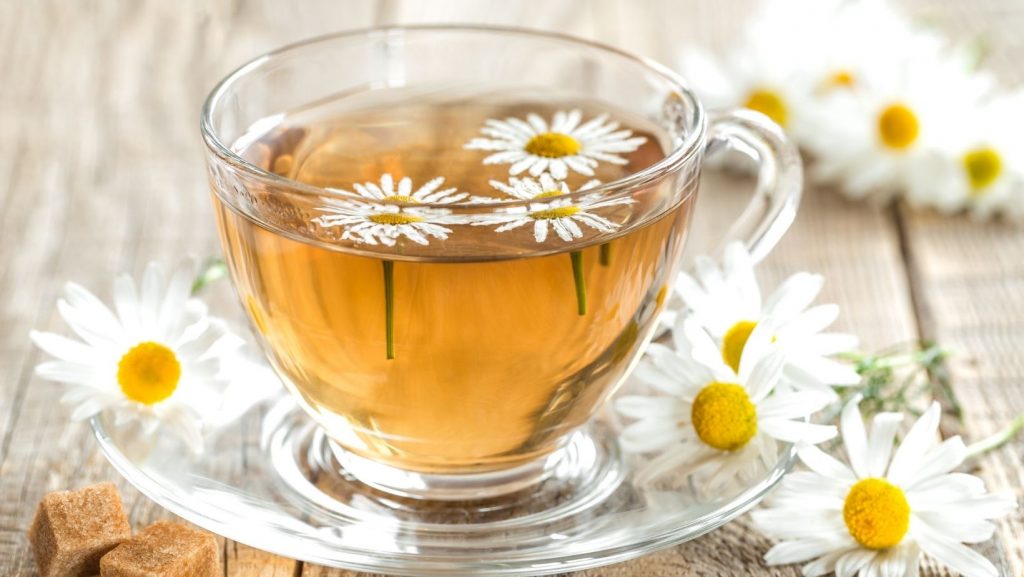
Medicinal Herbs
Herbal medicine has been around for thousands of years. Just like more modern medicines however, herbs can be dangerous when taken in too large of a dose or when they interact with other medications. Healthline has a list of 9 of the world’s most popular herbal medicines, including their main benefits, uses, and relevant safety information. Learn about at least three herbs that are good for medicinal purposes. Know the dangers of your three herbs as well as the benefits.
To Do: Try a “medicinal” herbal tea such as chamomile. According to Medical News Today, chamomile tea can help with everything from mensural cramps to lowering blood pressure. What herbal teas do you enjoy? What are their health benefits?
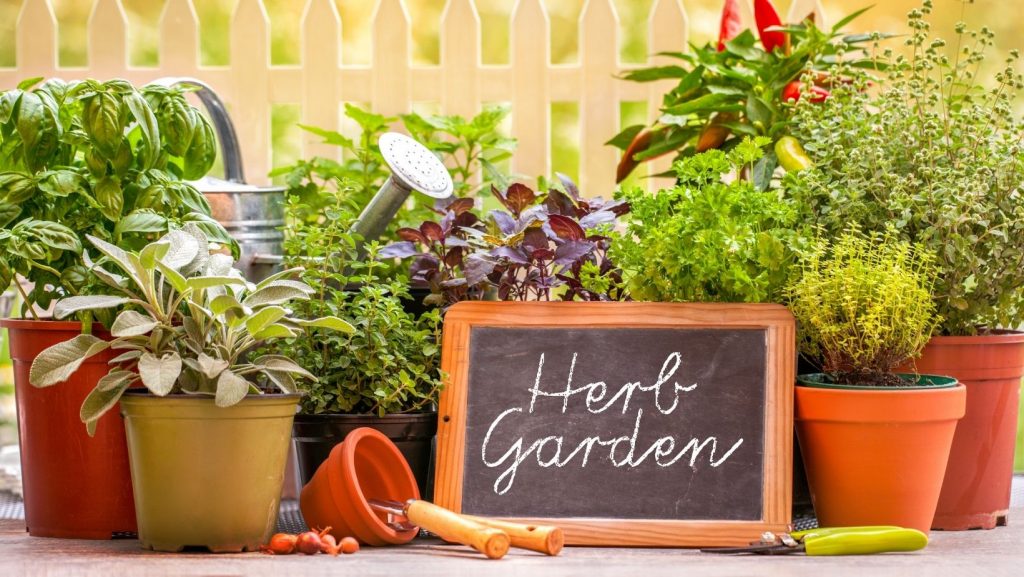
Grow Some Herbs
Growing herbs is usually quite easy and can be done in a small limited amount of space. Whether you have just a single plant on your kitchen window sill, or intricate herb garden outdoors, having access to fresh herbs will take your culinary endeavors to new heights.
To Do: Create a small herb garden. For those with limited space or uncooperative weather, try a simple indoor window sill garden. Instructions can be found at The Spruce website.
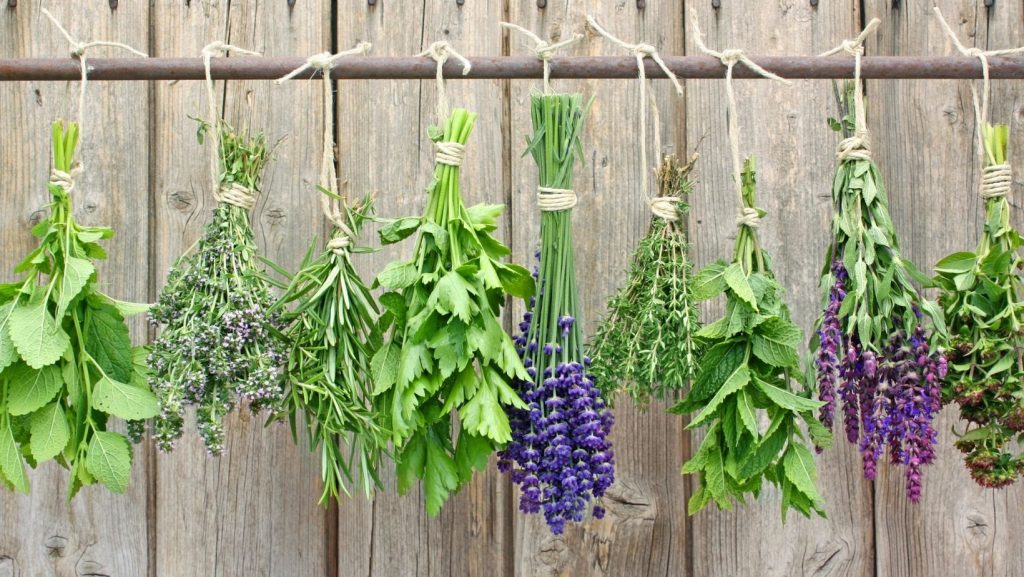
How to Store Herbs
Unlike spices, herbs are usually best used when fresh. Storing them properly to make them last longer will help you get the most out of your herb harvest. You can also dry or freeze herbs to preserve them for later use as well. Boston Organics has 10 Easy Ways to Preserve Herbs
To Do: Make some olive oil herb ice cubes to preserve your herbs. Directions can be found at The Gardener’s Eden in their article, “Preserving the Harvest: Fresh-Frozen Herbs in Oil, Butter, Broth or Water…“
Herb Crafts
What would earning a badge be without some sort of craft to make. Herbs and essential oils can be used in a wide variety of crafts and make wonderful gifts.
To Do: Make Rosemary Pressed Herb Candles. Full instructions can be found on the Garden Therapy website.
Follow our Facebook page for daily badge of the week resources. For planning purposes you can see which badges will be featured on our badge of the week calendar. You can also sort and search articles by topic on our main blog page. If you are not already a member, check out our membership pricing page.

